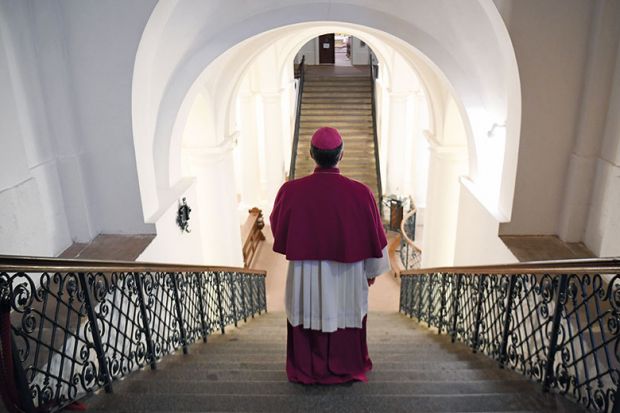It look four years and a trawl of more than 38,000 documents dating back to 1946. And the results of a huge research project into sexual abuse of minors by clergy in the German Catholic church, conducted by a consortium of psychiatrists and criminologists from four universities and research institutes, were truly shocking.
Close to one in 20 clergy between 1946 and 2014 were suspected to have committed sexual abuse, with the researchers finding evidence of 1,670 potential abusers and nearly 4,000 victims. The findings have led to outpourings of contrition from the German bishops who commissioned the study, and rekindled the debate on celibacy within the Catholic church.
Yet the results have also sparked a parallel debate in Germany about how the study should have been conducted in the first place. For some critics, the church took too much control of the process, leaving many questions about the scale of abuse and the responsibility of individual bishops unanswered.
The results have only revealed “the tip of the iceberg” in terms of abuse, acknowledged Hans-Joachim Salize, part of the consortium of researchers and a professor of psychiatric epidemiology at the Central Institute of Mental Health, in Mannheim.
In order to comb through the career records of clergy for signs of abuse – complaints from parents, or unexplained actions, for example – the researchers had to recruit teams of four to five people for each of Germany’s 27 dioceses. If they found “hints” of sexual abuse, they fed these findings back to the researchers through anonymous questionnaires.
Controversially, these teams were made up of employees of the dioceses themselves, headed by a judge or someone with a legal background.
“This is a source of bias of course,” said Professor Salize. “There were dioceses that were eager by themselves to find out what had happened, and there were some dioceses that were more reluctant.”
Others have been more blunt. Using church employees to scour their own records is a “joke”, said Christian Pfeiffer, a prominent criminologist and Saxony’s former justice minister, because it allows the accused “to produce the data”.
Professor Pfeiffer has been outspoken in the German media about the constraints imposed by the church on the study. However, he was at pains to stress that he was not criticising the researchers involved, and thought that the project was still worth proceeding with despite the limitations.
He was originally in talks to lead the inquiry, which he said would have employed its own record-checkers, but pulled out after he alleged that the church had tried to ensure that it would be able to impose “censorship” on any final report. He also complained that the final study only reports national level data, making it impossible to identify bishops who failed to punish abusive priests or compensate victims.
“We do not cover up these limitations,” said Harald Dressing, the consortium leader, and a forensic psychiatrist, also based at the Central Institute of Mental Health. “This is one of the first sentences in our report. Is a glass of water half full, or half empty?”
The study’s aim was never – by itself – to bring individual clergy to justice. “The research project did not pursue a legal or criminalistic approach, but a retrospective-descriptive and epidemiological one,” it says.
Also complicating the investigation were strict German legal protections of the data of the “95 per cent” of priests who are innocent, Professor Dressing said.
The church could easily have blocked even this anonymous investigation under data protection laws, but it was forced to buckle under public pressure, he said.
If the researchers had made one mistake, it was not using public pressure to force the church into a more open stance, said Professor Pfeiffer.




